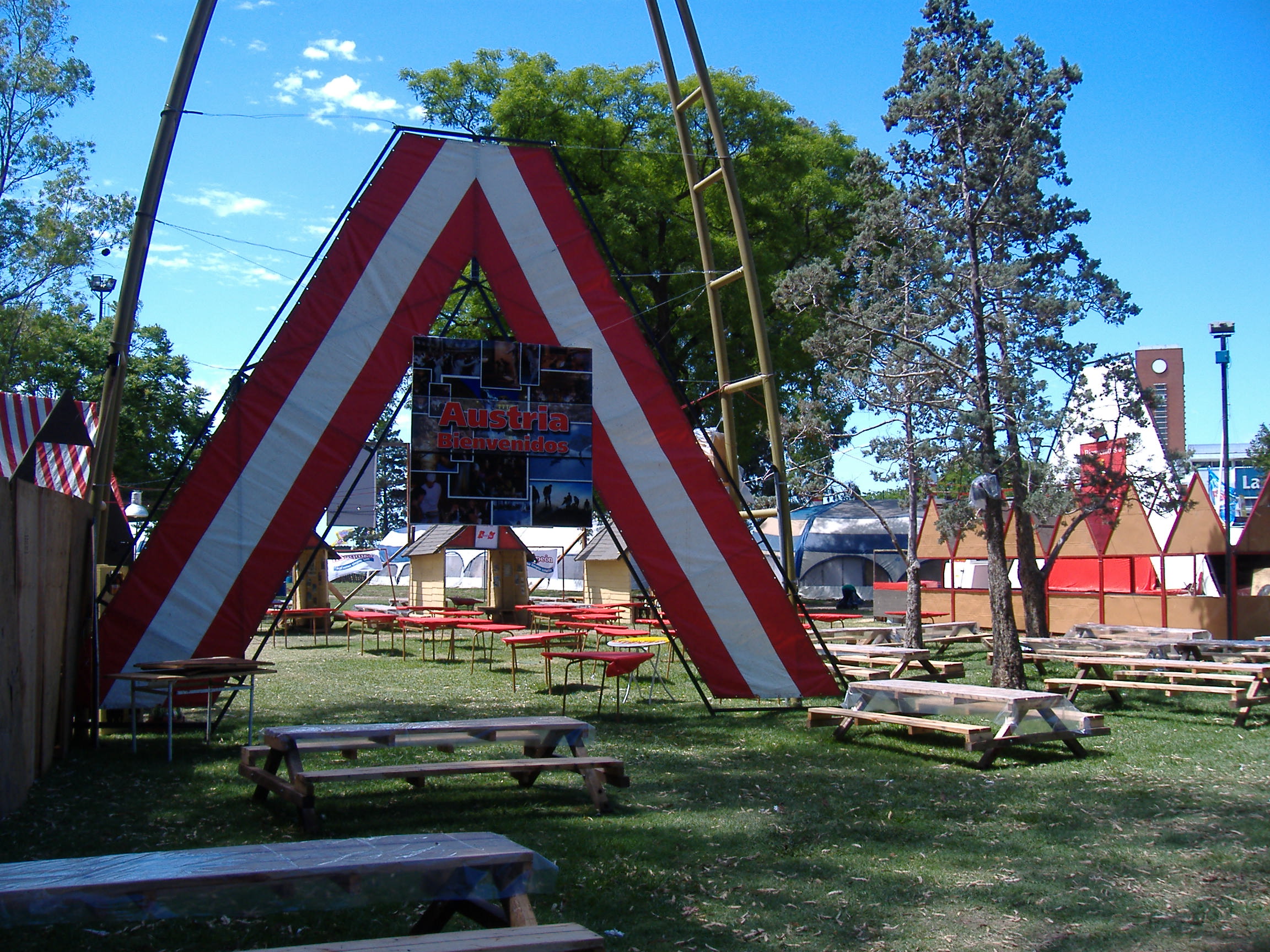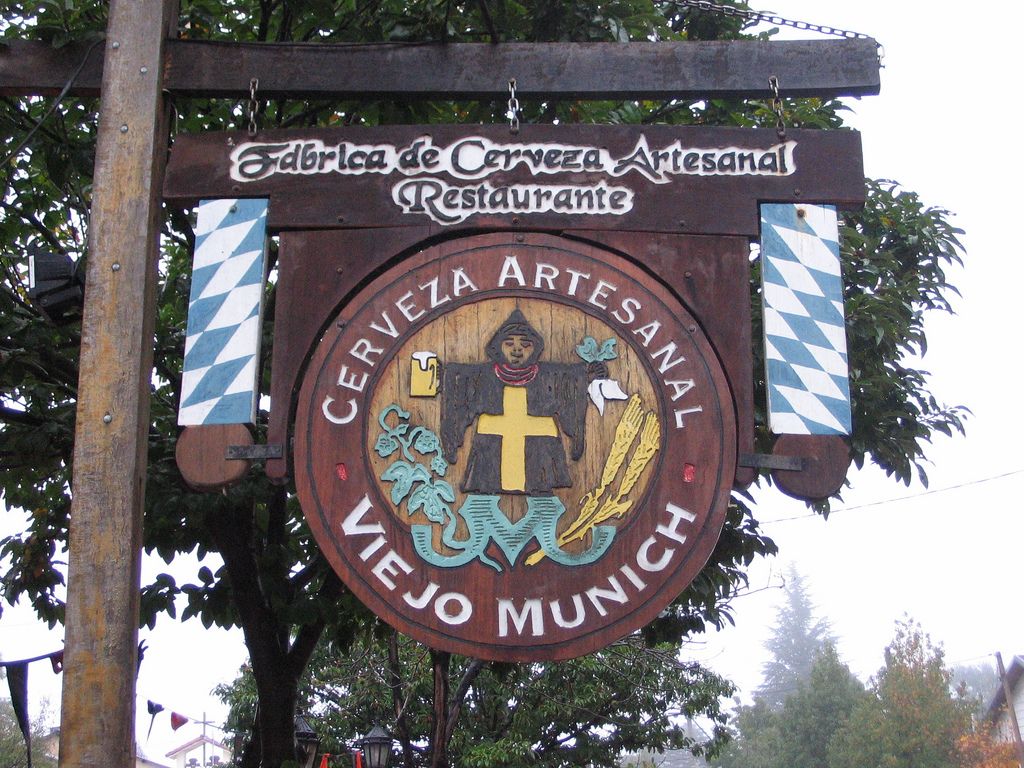|
Austrian Argentines
Austrian Argentines are Argentine citizens of Austrian descent or Austrian-born people who emigrated to Argentina. Many Austrian descendants in Argentina arrived in the country from other parts of Europe when Austria was a unified kingdom with Hungary. Austrian immigration has been linked to other migratory flows towards the South American country as the German and Swiss immigration waves, among others. History Austrian immigrants who came to Argentina did during the two great migratory waves, i.e., about the First and Second World War. The main settlement sites were Buenos Aires, Córdoba and Misiones; in the south, cities like San Carlos de Bariloche and San Martín de los Andes were among the main destinations for Austrians. The amount has never exactly been relieved and there are mostly estimates. In the early thirties, there were approximately 240,000 German-speaking people of whom 45,000 resided in Buenos Aires, and since about 9,000 were of Austrian descent. These figu ... [...More Info...] [...Related Items...] OR: [Wikipedia] [Google] [Baidu] |
Rioplatense Spanish
Rioplatense Spanish (), also known as Rioplatense Castilian, is a variety of Spanish spoken mainly in and around the Río de la Plata Basin of Argentina and Uruguay. It is also referred to as River Plate Spanish or Argentine Spanish. It is the most prominent dialect to employ '' voseo'' in both speech and writing. Many features of Rioplatense are also shared with the varieties spoken in south and eastern Bolivia, and Paraguay. This dialect is often spoken with an intonation resembling that of the Neapolitan language of Southern Italy, but there are exceptions. As Rioplatense is considered a dialect of Spanish and not a distinct language, there are no credible figures for a total number of speakers. The total population of these areas would amount to some 25–30 million, depending on the definition and expanse. Location Rioplatense is mainly based in the cities of Buenos Aires, Rosario, Santa Fe, La Plata, Mar del Plata and Bahía Blanca in Argentina, the most populated ... [...More Info...] [...Related Items...] OR: [Wikipedia] [Google] [Baidu] |
Misiones Province
Misiones (, ''Missions'') is one of the 23 provinces of Argentina, located in the northeastern corner of the country in the Mesopotamia region. It is surrounded by Paraguay to the northwest, Brazil to the north, east and south, and Corrientes Province of Argentina to the southwest. This was an early area of Roman Catholic missionary activity by the Society of Jesus in what was then called the Province of Paraguay, beginning in the early 17th century. In 1984 the ruins of four mission sites in Argentina were designated World Heritage Sites by UNESCO. History Indigenous peoples of various tribes lived in the area of the future province for thousands of years. At the time of European encounter, it was occupied by the Kaingang and Xokleng tribes, later followed by the Guarani tribe. The first European to visit the region, Sebastian Cabot, discovered Apipé Falls while navigating the Paraná River in December 1527. In 1541 Álvar Núñez Cabeza de Vaca reached the Iguaz ... [...More Info...] [...Related Items...] OR: [Wikipedia] [Google] [Baidu] |
Argentines Of European Descent
European Argentines belong to several communities which trace their origins to various migrations from Europe and which have contributed to the country's cultural and demographic variety.Sociología Argentina. by José Ingenieros. Editorial Losada, 1946. Pages 453, 469, 470. They are the descendants of colonists from Spain during the colonial period prior to 1810,''Historical Dictionary of Argentina''. London: Scarecrow Press, 1978. pp. 239–40. or in the majority of cases, of Spanish, Italians, French, Russians and other Europeans who arrived in the great ... [...More Info...] [...Related Items...] OR: [Wikipedia] [Google] [Baidu] |
Argentina–Austria Relations
Diplomatic relations have existed between the Argentina and the Austria for decades. Both nations are members of the United Nations. History In 1864, Argentina and the Austro-Hungarian Empire established diplomatic relations. By the early 20th century, a few migrants from Austria had immigrated to Argentina. In 1921, Argentina donated 5 million Argentine pesos to a devastated Austria which had emerged as an independent nation after World War I. In gratitude, Austria named a street in Vienna (''Argentinierstraβe''). The majority of Austrian migrants who arrived to Argentina arrived in two great migratory waves during the First and Second World Wars. In October 1994, Argentine President Carlos Menem became the first Argentine head-of-state to pay a visit to Austria. In December 2000, Argentina limited its relations with Austria with regards to the participation of the '' Alliance for the Future of Austria'' party led by Jörg Haider who was known for statements in praise of Naz ... [...More Info...] [...Related Items...] OR: [Wikipedia] [Google] [Baidu] |
Villa Regina
Villa Regina is a city in the General Roca Department of the . The city is connected to the rest of the towns in the Upper Río Negro Valley via National Route 22. The city was built by the Italian-Argentine Colonization Company ( es, Compañía Italo-Argentina de Colonización), which purchased 5,000 hectares for urban development from the estate of Manuel Zorrilla. The lands were divided into four zones of 1,300 hectares, 1,200 hectares, 1,300 hectares, and 1,200 hectares. These zones were then subdivided into lots, which were sold to families that immigrated to Argentina from Italy. The settlement was established on November 7, 1924. It was originally named Colonia Regina de Alvear, after the wife of then-president Marcelo T. de Alvear, who had approved the project. The company developed the town with the help of Italian investors. In 1930, the government of Rio Negro created the municipality of Villa Regina, dissolving the Italian-Argentine Colonization Company. By 1939, th ... [...More Info...] [...Related Items...] OR: [Wikipedia] [Google] [Baidu] |
Eldorado, Misiones
Eldorado is a city in the center-northeast of the province of Misiones, Argentina. It has 54,189 inhabitants as per the , making it the third most populated city in the province, and is the head town of the Eldorado Department. It is located on the left-hand (eastern) banks of the Upper Paraná River, on National Route 12, about 100 km from the Iguazú Falls and 206 km from the provincial capital Posadas, on the Argentina-Paraguay border. Eldorado was founded on 29 September 1919 as a rural settlement and a port on the Paraná by German-born Adolfo Julius Schwelm, naturalised British subject, who named it as a reference to the legend of El Dorado. The town was the center of the European immigrant colonization of the area (which included groups of people from Germany, Switzerland, Poland, Denmark, England, and others). The region's economy is based on agriculture, producing tung, oranges, grapefruit and yerba mate. Tourism also plays a part, with main activities being ... [...More Info...] [...Related Items...] OR: [Wikipedia] [Google] [Baidu] |
San Benito, Entre Ríos
San Benito is a village and municipality in Entre Ríos Province in north-eastern Argentina Argentina (), officially the Argentine Republic ( es, link=no, República Argentina), is a country in the southern half of South America. Argentina covers an area of , making it the second-largest country in South America after Brazil, t .... History References Populated places in Entre Ríos Province {{EntreRíosAR-geo-stub ...[...More Info...] [...Related Items...] OR: [Wikipedia] [Google] [Baidu] |
Quitilipi
Quitilipi is a city in Chaco Province, Argentina. It is the head town of the Quitilipi Department Quitilipi is a central department of Chaco Province in Argentina. The provincial subdivision has a population of about 32,000 inhabitants in an area of 1.545 km2, and its capital city is Quitilipi, which is located some 1.160 km from the City of .... External links Populated places in Chaco Province Populated places established in 1912 1912 establishments in Argentina {{ChacoAR-geo-stub ... [...More Info...] [...Related Items...] OR: [Wikipedia] [Google] [Baidu] |
Resistencia, Chaco
Resistencia () is the capital and largest city of the province of Chaco in north-eastern Argentina. According to the 2010 census, the population of the city proper was 291,720 inhabitants. It is the anchor of a larger metropolitan area, Greater Resistencia, which comprises at least three more municipalities for a total population of 387,340 as of 2010. This conurbation is the largest in the province, and the eleventh most populous in the country. It is located along the Negro River, a tributary of the much larger Paraná River, opposite the city of Corrientes, Corrientes Province. The area was originally inhabited by Guaycuru aboriginals such as the Tobas. Their resistance to evangelisation postponed substantial European settlement until the late 19th century. Not until 1865 was a proper settlement established, and on January 27, 1878, Resistencia was formally established as the territorial capital. The national government supported immigration, and in 1878 the first Itali ... [...More Info...] [...Related Items...] OR: [Wikipedia] [Google] [Baidu] |
Villa General Belgrano
Villa General Belgrano is a mountain village at the valley of Calamuchita in the Province of Córdoba in central Argentina. It has 6,260 inhabitants and is named after the independence hero and creator of the Argentine flag Manuel Belgrano. History Villa General Belgrano was founded in 1930, by two German speculators attracted by its agricultural potential. The Alpine quality of the village attracted immigrants from Germany, Switzerland, Italy and Austria. In 1940, after the Battle of the River Plate, German seaman scuttled and sunk their battleship, the '' Admiral Graf Spee'' off the coast of the Montevideo harbour, and 130 of its surviving sailors settled in the village along with the original settlers and landscaped the mountain ranges of Córdoba with red-roofed, wood-frame homes, microbreweries and pastry and chocolate shops which gave it that unique style that distinguishes it today. A well-known German resident was Kurt Tank, who became a leading member of the Argentine A ... [...More Info...] [...Related Items...] OR: [Wikipedia] [Google] [Baidu] |
Uruguay
Uruguay (; ), officially the Oriental Republic of Uruguay ( es, República Oriental del Uruguay), is a country in South America. It shares borders with Argentina to its west and southwest and Brazil to its north and northeast; while bordering the Río de la Plata to the south and the Atlantic Ocean to the southeast. It is part of the Southern Cone region of South America. Uruguay covers an area of approximately and has a population of an estimated 3.4 million, of whom around 2 million live in the metropolitan area of its capital and largest city, Montevideo. The area that became Uruguay was first inhabited by groups of hunter–gatherers 13,000 years ago. The predominant tribe at the moment of the arrival of Europeans was the Charrúa people, when the Portuguese first established Colónia do Sacramento in 1680; Uruguay was colonized by Europeans late relative to neighboring countries. The Spanish founded Montevideo as a military stronghold in the early 18th century ... [...More Info...] [...Related Items...] OR: [Wikipedia] [Google] [Baidu] |


.jpg)




